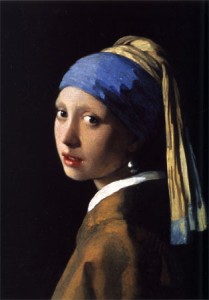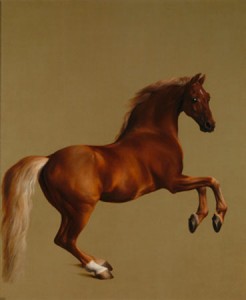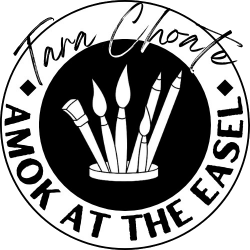A couple of weeks ago I stayed home sick (I had a little fever and was achy.) I slept a lot and took the dog for a walk, but mostly I knit and watched recorded items on my DVR.
One of those items was the movie “Girl with a Pearl Earring”. While I don’t recommend it, it does have some great scenes about art, particularly one scene where the artist Vermeer asks the serving girl who sits for the title painting, “What color are clouds?”

The movie was interesting enough that I went and looked up Vermeer on Wikipedia and learned a lot.
I do not paint oils; oils are the opposite of watercolor in that the process is dark to light. But I was fascinated to learn that glazing is a technique used in both mediums to create color intensity.
In the 18th century, George Stubbs brought the idea of equestrian portraits to the fore. Prior to Stubbs, portraits had been only of humans, perhaps seated on a favorite mount, but not just the horse.

When I saw this portrait in the National Gallery in London, it was a great experience. It was a piece I had never really cared for, but when I saw it in person I realized what Stubbs was really trying to do; he was trying to preserve an animal as brilliant as a flame and just as etherial forever. A background would have just ruined it.
One of my favorite books of all time is “The Color of Horses” by Ben K. Green (illustrated by Darol Dickinson.) In it, I learned all horses are the same color (the only actual pigment in hair is an amber color); the only difference is the arrangement of the pigment.
This weekend I am taking a workshop entitled “Let’s Get E-Motion-Al”. For the first day, we talked about color theory. It made me realize that while I like to paint pink donkeys and purple horses, then put a “realistic” glaze over it, there is a lot I could do to bring some more emotion to my painting.
It’s not enough to ask “What color is it” or to underpaint to provide some personality… color is one of the biggest clues to what the artist is wanting you to feel.
Something to consider for tomorrow.
